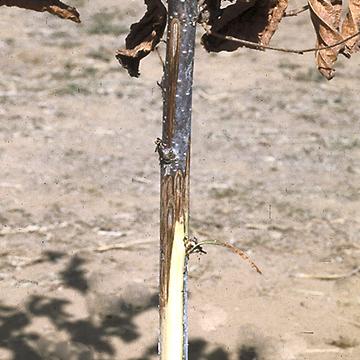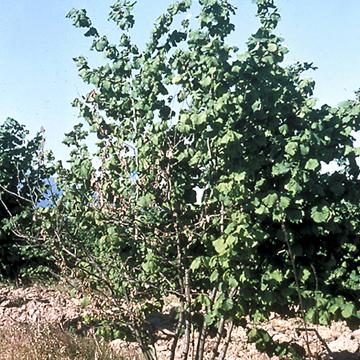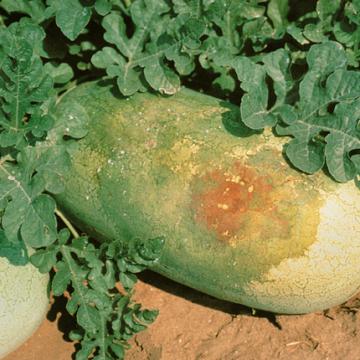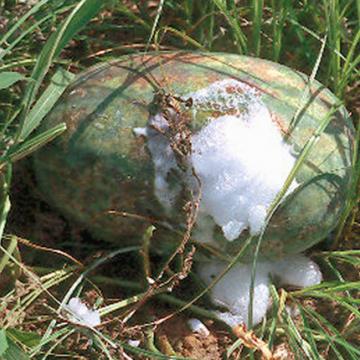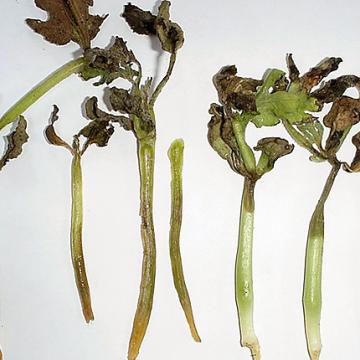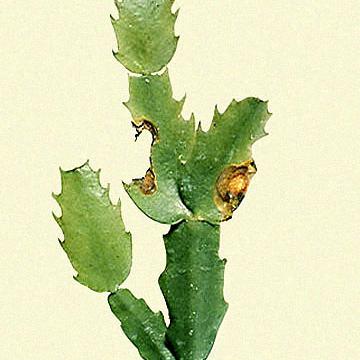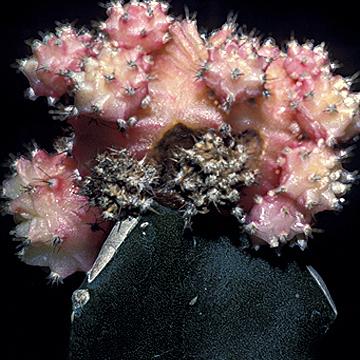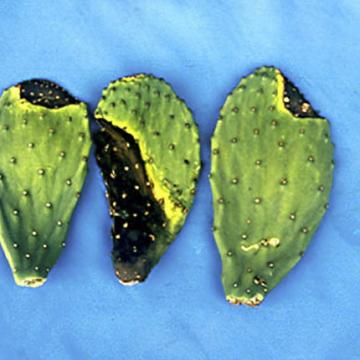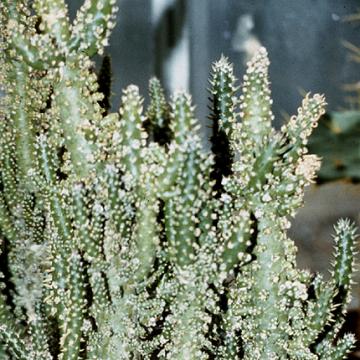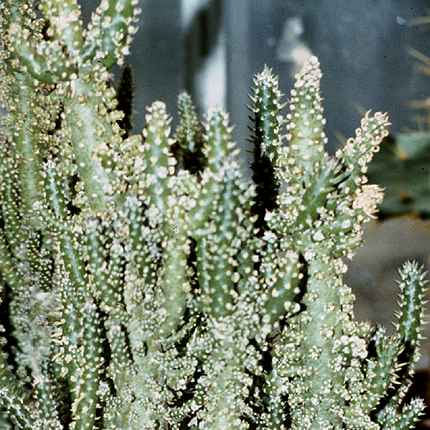DISEASE: Bacterial blight
HOST: Hazelnut
Diseased young tree with discoloration of the cambium. Dieback of young twigs and branches is characteristic. Other typical symptoms are bud and twig necrosis and small, angular or round, water-soaked leaf spots.
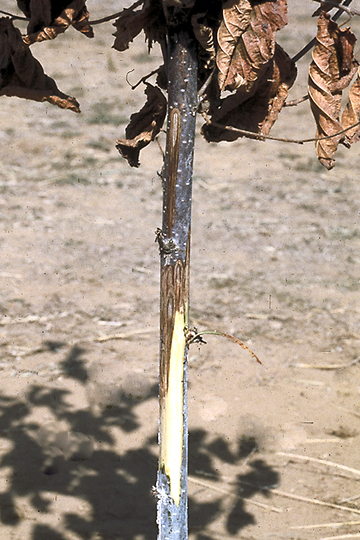
Bacterial blight | Hazelnut
DISEASE: Bacterial blight
HOST: Hazelnut (Corylus americana)
PATHOGEN: Xanthomonas arboricola pv. corylina
SOURCE: J. Pscheidt
DISEASE: Bacterial canker
HOST: Hazelnut
Primary symptoms are failure of buds to break and withering and death of new foliage in spring. Dead leaves remain attached to limbs after normal leaf fall.
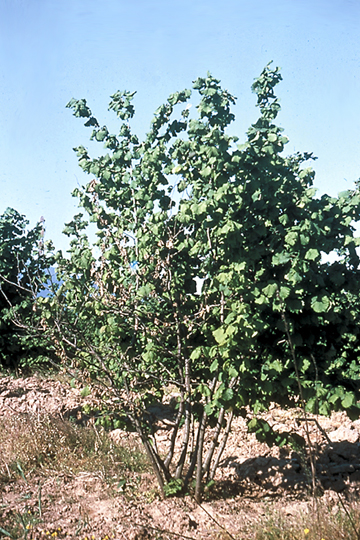
Bacterial canker | Hazelnut
DISEASE: Bacterial canker
HOST: Hazelnut (Corylus americana)
PATHOGEN: Pseudomonas syringae pv. avellanae
PATHOGEN SYNONYM: Pseudomonas avellanae
SOURCE: P. Psalidas
DISEASE: Bacterial fruit blotch
HOST: Watermelon
Symptoms of external disease of mature watermelon.
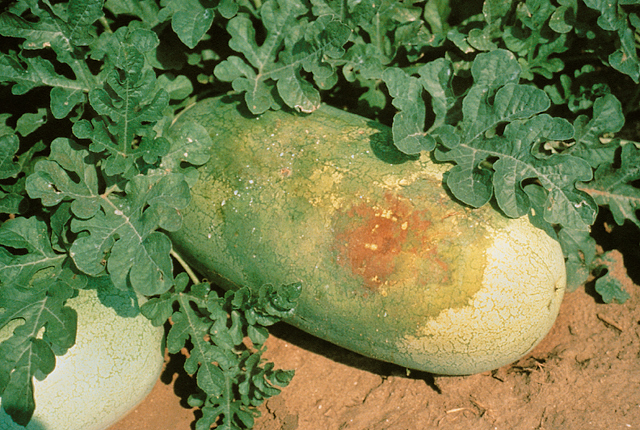
Bacterial fruit blotch | Watermelon
DISEASE: Bacterial fruit blotch
HOST: Watermelon (Citrullus lanatus)
PATHOGEN: Acidovorax citrulli
PATHOGEN SYNONYM: Acidovorax avenae subsp. citrulli
SOURCE: R. X. Latin
DISEASE: Bacterial fruit blotch
HOST: Watermelon
Diseased watermelon with copious white foam.
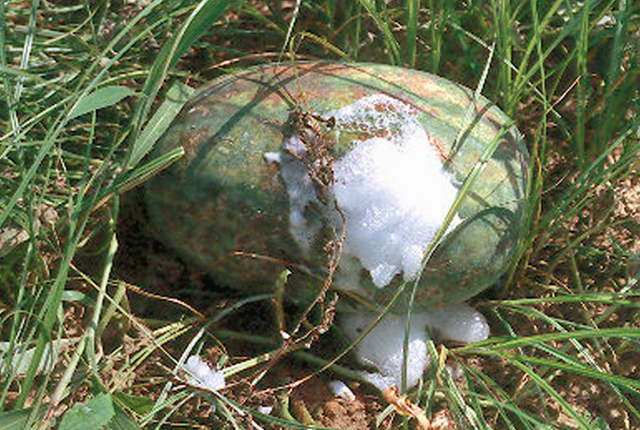
Bacterial fruit blotch | Watermelon
DISEASE: Bacterial fruit blotch
HOST: Watermelon (Citrullus lanatus)
PATHOGEN: Acidovorax citrulli
PATHOGEN SYNONYM: Acidovorax avenae subsp. citrulli
SOURCE: R. Gitaitis
DISEASE: Bacterial leaf and stem necrosis
HOST: Watermelon
Seedlings with necrotic leaves and water-soaked stems.
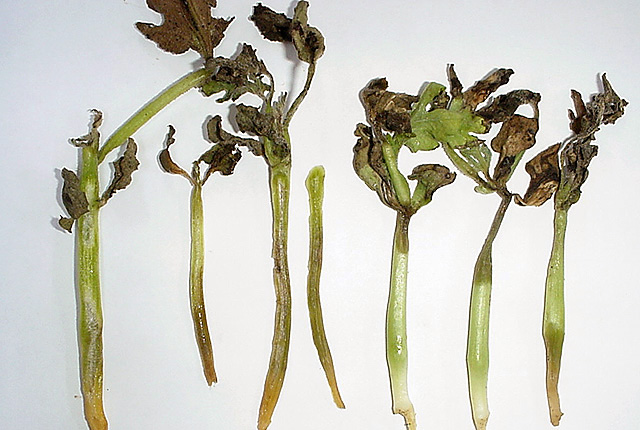
Bacterial leaf and stem necrosis | Watermelon
DISEASE: Bacterial leaf and stem necrosis
HOST: Watermelon (Citrullus lanatus)
PATHOGEN: Pseudomonas viridiflava
SOURCE: Y. Aysan
DISEASE: Bacterial soft rot (Cladode rot)
HOST: Cactus
Brown necrotic areas of cladodes of Christmas cactus.
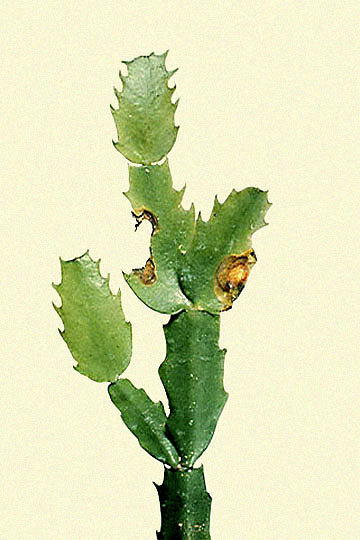
Bacterial soft rot (Cladode rot) | Cactus
DISEASE: Bacterial soft rot (Cladode rot)
HOST: Cactus (Schlumbergera × buckleyi)
PATHOGEN: Pectobacterium carotovorum
PATHOGEN SYNONYM: Erwinia carotovora subsp. carotovora
SOURCE: A. Alvarez
DISEASE: Bacterial soft rot
HOST: Cactus
Soft rot of grafted cactus.
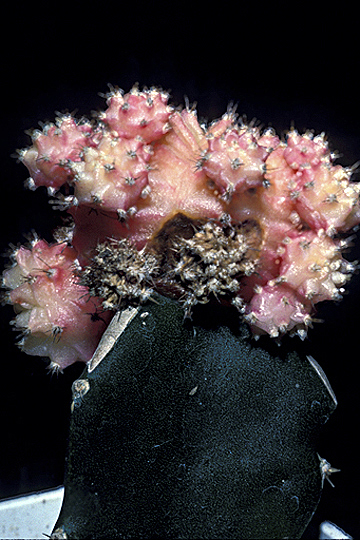
Bacterial soft rot | Cactus
DISEASE: Bacterial soft rot
HOST: Cactus ()
PATHOGEN: Pectobacterium carotovorum
PATHOGEN SYNONYM: Erwinia carotovora subsp. carotovora
SOURCE: R. Raabe
DISEASE: Bacterial soft rot
HOST: Cactus
Black, soft, decayed areas of Indian fig cladodes.
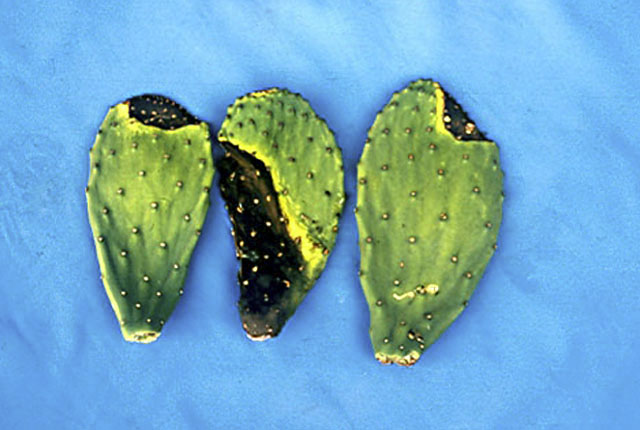
Bacterial soft rot | Cactus
DISEASE: Bacterial soft rot
HOST: Cactus (Opuntia ficus-indica)
PATHOGEN: Pectobacterium carotovorum
PATHOGEN SYNONYM: Erwinia carotovora subsp. carotovora
SOURCE: L. Fucikovsky


